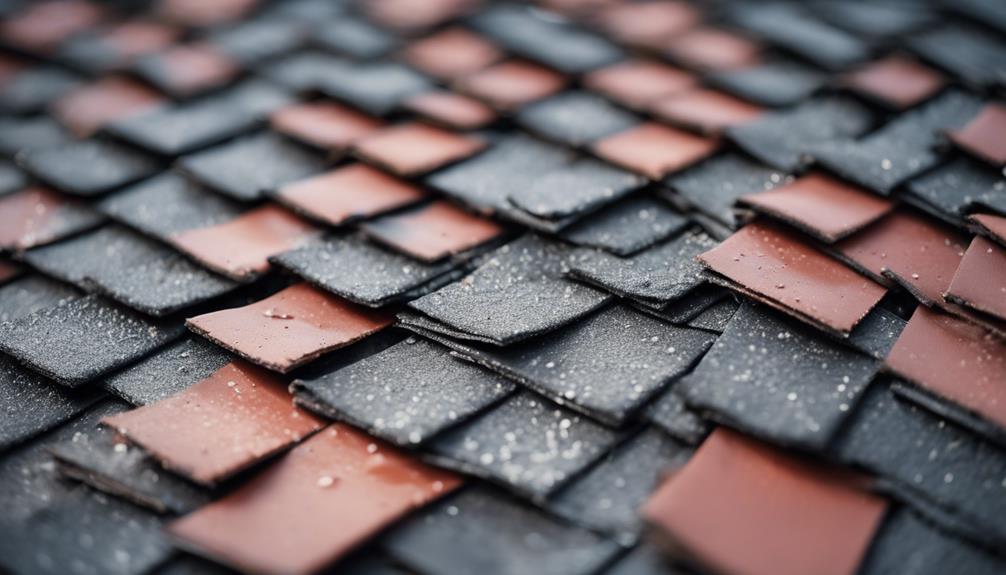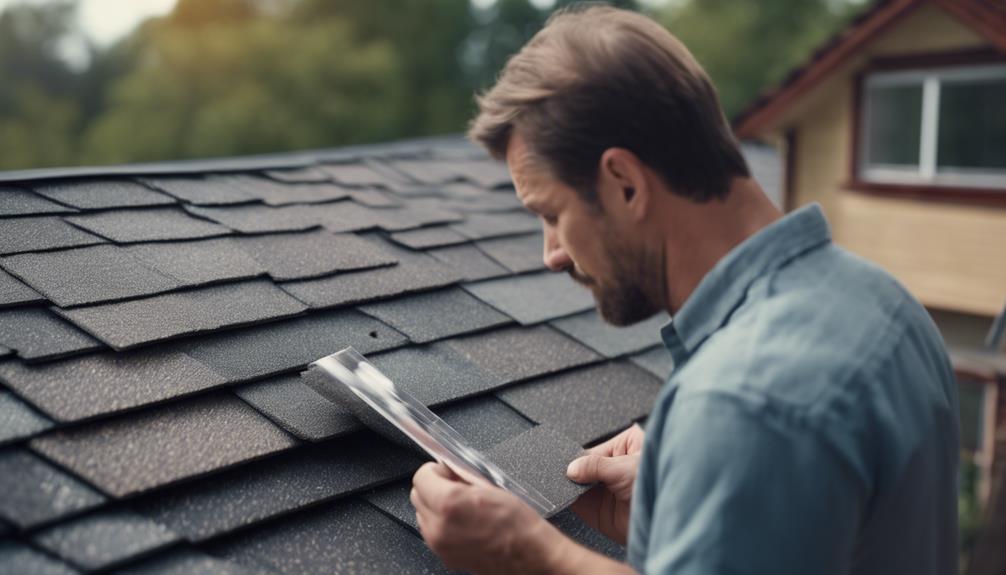What are the Key Differences of Asphalt Shingles vs Other Roofing Materials?
Leverage this insightful comparison of asphalt shingles against alternative roofing materials to uncover the perfect choice for your home's protection and style.
Asphalt shingles have been a go-to option for roofs due to their balance of cost-effectiveness and dependability. However, there’s a wide range of roofing materials available beyond this conventional selection.
Exploring alternative options like metal, tile, wood, and composites uncovers a variety of features that can influence choices regarding durability, appearance, and maintenance.
By examining the unique qualities of each material, a comprehensive comparison of how asphalt shingles measure up against other options comes to light. This comparison provides valuable guidance for homeowners navigating the decision-making process of choosing the best roofing material for their needs.
How Does the Durability of Asphalt Shingles Compare to Other Roofing Materials?
When comparing roofing materials based on durability, it is essential to take into account their ability to withstand various environmental factors over an extended period.
Metal roofing, known for its longevity, is highly durable and can last 40-70 years, depending on the material. It is resistant to fire, insects, rot, and mildew, making it a popular choice for areas prone to adverse weather conditions.
Tile roofing, typically made from clay or concrete, is also highly durable and can last 50 years or more. Wood shingles, while aesthetically pleasing, are less durable than metal or tile and may require more maintenance to prevent issues like rot and insect damage.
Composite roofing, made from a mixture of materials like rubber, plastic, or fibreglass, offers a balance of durability and affordability, lasting around 20-50 years.
What are the Differences in Maintenance Considerations for Asphalt Shingles?
Considering the longevity and performance of roofing materials, examining the maintenance requirements is important to guarantee the continued durability and functionality of the roof system.
Asphalt shingles, while generally low maintenance, may require periodic inspections to check for any damage, especially after severe weather conditions. Regular cleaning of debris and moss buildup can prevent premature deterioration.
Metal roofs are also relatively low maintenance but may benefit from inspections to make sure no corrosion or loose fasteners are present.
Tile roofs require minimal maintenance, mainly consisting of replacing any broken tiles and making sure the flashing is intact. Wood roofs need regular inspections for rot and mould, requiring treatments to prevent decay.
Composite roofs typically have low maintenance needs but should still be inspected for any signs of wear or damage.
What Makes Asphalt Shingles Weather Resistant Than Other Roofing Materials?

To guarantee the longevity and performance of roofing materials, evaluating their weather resistance is imperative in determining their ability to withstand various climatic conditions.
Weather resistance evaluation involves analyzing how well a roofing material can endure elements such as rain, snow, hail, wind, and UV exposure.
Asphalt shingles, for instance, are known for their moderate weather resistance, providing adequate protection against common weather conditions.
Metal roofing, on the other hand, offers excellent weather resistance, being highly durable against severe weather events like hurricanes and heavy snow loads.
Factors such as material composition, surface treatment, and installation method contribute to a roofing material’s weather resistance. When choosing a roofing material to make certain it can withstand the specific weather conditions prevalent in that area, it is important to consider the local climate.
Regular maintenance and inspections can help prolong the lifespan of a roof by addressing any weather-related damage promptly.
How Does the Cost Analysis Vary Among Different Roofing Materials?
Conducting a thorough cost analysis is essential when comparing roofing materials to determine the most financially feasible option for a project. Cost considerations include not only the initial material and installation expenses but also long-term maintenance and repair costs.
To aid in the comparison process, the table below outlines the cost analysis of common roofing materials per square foot, including installation costs.
| Roofing Material | Average Cost per Square Foot |
|---|---|
| Asphalt Shingles | $1.50 – $5.50 |
| Metal | $5.00 – $12.00 |
| Tile | $7.00 – $18.00 |
| Wood | $6.00 – $15.00 |
| Composite | $4.00 – $10.00 |
Asphalt shingles generally have the lowest upfront costs, making them a popular choice for budget-conscious projects. However, metal roofing, while more expensive initially, offers durability and longevity that can result in cost savings over time due to reduced maintenance and replacement needs.
Tile and wood roofs, while aesthetically pleasing, come with higher installation and maintenance costs. Composite roofing provides a middle ground in terms of cost, offering a balance between affordability and durability. Consider these cost factors with regard to the specific needs of your project when selecting the most suitable roofing material.
How Should One Decide on Using Asphalt Shingles or Other Roofing Materials?

When evaluating roofing materials, a strategic approach that prioritizes long-term cost efficiency and durability is essential for informed decision-making.
Begin by appraising your specific needs: contemplate the climate, architectural style, and budget constraints. Each roofing material has its advantages and drawbacks; understanding these will aid in making a well-informed choice.
Evaluate the lifespan of the materials – while asphalt shingles are cost-effective initially, metal roofing may prove more durable in the long run. Contemplate the maintenance requirements; some materials, like wood, may need more upkeep than others.
Energy efficiency is another critical factor to ponder; metal roofs, for instance, reflect sunlight, reducing cooling costs in hot climates. Additionally, investigate the environmental impact of the materials; some, like composite shingles made from recycled materials, are more sustainable.
Lastly, consult with roofing professionals to gain insights into the best options for your specific circumstances. By carefully appraising these factors, you can make a decision that aligns with your needs and priorities.
Frequently Asked Questions
How Do the Installation Processes Differ Between Asphalt Shingles and Metal Roofing Materials?
The installation processes between asphalt shingles and metal roofing materials differ in several aspects, such as the required tools, techniques, and timeframe. Metal roofing typically involves more precise measurements and specialized equipment compared to asphalt shingles.
Are There Any Unique Environmental Considerations to Take Into Account When Choosing Between Tile and Wood Roofing Materials?
When selecting between tile and wood roofing materials, it is essential to ponder unique environmental factors. The tile is durable and fire-resistant but heavier, necessitating strong support. Wood offers natural beauty but may necessitate more maintenance and is susceptible to rot and pests.
Can Composite Roofing Materials Be Customized to Match the Aesthetic of Different Architectural Styles?
Composite roofing materials offer extensive customization options to match various architectural styles. Advanced manufacturing processes allow for replicating the appearance of natural materials like wood or slate while providing enhanced durability and performance in diverse environmental conditions.
What Are the Long-Term Maintenance Costs Associated With Metal Roofing Compared to Asphalt Shingles?
Long-term maintenance costs for metal roofing are generally lower than asphalt shingles due to its durability and resistance to weathering. Metal requires periodic inspections for rust prevention, coating touch-ups, and potential fastener tightening.
How Do the Insulation Properties of Different Roofing Materials Impact Energy Efficiency in a Home?
The insulation properties of roofing materials impact energy efficiency in homes. Materials like metal and tile offer superior insulation, reducing heat transfer and lowering energy costs. Proper installation and maintenance are important for best performance.
